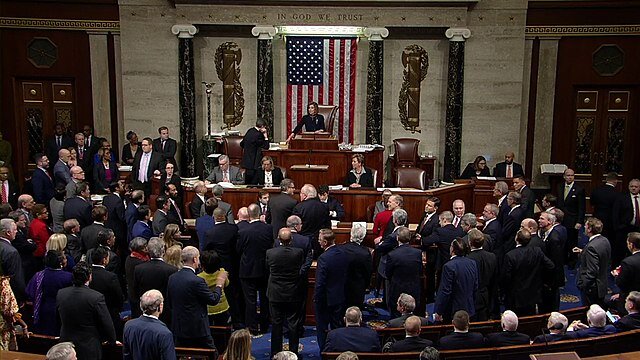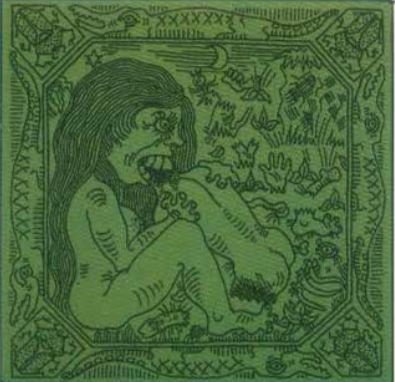That Time Indiana Tried to Legally Change Math
There are a few crazy laws being passed recently in the United States and there are a lot of weird laws all around the world but there have also been some truly ridiculous laws that almost passed in history.
Like, I don’t know, how about that time the Indiana House of Representatives introduced a bill to make fake math a law.
This really happened!
The year is 1897 and physician Edward J. Goodwin, who liked to dabble in mathematics, felt like things needed to change, legally. Because when you want to legally change a concept you want the guy that only dabbles in that as a hobby to lead the charge.
“We’ve all dabbled in surgery, so we’ll be your surgeons today!”
Goodwin proposed a way to solve the infamous problem of squaring the circle. This was an ancient mathematical problem that challenged trying to create a square that has the same area as a circle using only a compass and a straightedge.
And sure it was still a problem in Goodwin’s time if you ignore that the problem had been proven impossible in 1882, 16 years before Goodwin’s attempt to get the law passed.
Math Recap
But why was this even considered impossible? Well, as a reminder:
Radius is the distance from the center of a circle to any point on the circle line. An interesting quirk of a circle is, if you have a circle with a radius of 1, then its area is Pi or 3.14blahblahblah, I only say blah blah blah because it never ends. The number goes on and on with no discernable end or repeating number.
In 1882 Ferdinand von Lindemann proved pi to be a transcendental number, or as I like to call them, super irrational numbers. For example, .3333333blahblah is an irrational number but not transcendental (or super irrational) because I can express .33 as the fraction 1 over 3 (weak).
So now that we know pi is transcendental and the most important piece of the area of a circle, if we try to make a square with the same area we hit a roadblock. Take my example from earlier, a circle with the area of pi, if we wanted to make a square with the same area it would be impossible to figure out using only a compass and straightedge.
The area of a square is its length times its width which means we need two equal numbers that when multiplied equal pi. But since we don’t know where pi ends because it goes forever, we can never get an exact length or width, and the square can never be drawn.
Goodwin Solves It… sort of
So Goodwin saw all of that and said “Nah I could figure it out” Then after a few hours he said, “I got it! If I can’t figure it out, I’ll just make it up and get it in the papers!”
“Everyone write this down, if you’re stuck, make shit up!”
Goodwin drew up his “mathematical proof” and asked the American Mathematical Monthly Journal to publish it in 1894. They were new so I’d like to think they didn’t know what they were doing… although they did add a note stating the proof was only printed at the request of the author. So maybe they did know to distance themselves a bit.
Despite this, Goodwin used this as further credence to his proof when he presented it to the Indiana House of Representatives. This became “House Bill 246” or as it would eventually be known, the “Indiana Pi Bill”.
Now Goodwin didn’t directly address pi in his bill but through his weird math logic pi became the number 3.2 and then said this in reference to the number 3.14, “it should be discarded as wholly wanting and misleading in its practical applications.”
And if you think Goodwin was just trying to be proactive in getting a law passed so that it can eventually be taught to children, I got some bad news. He actually copyrighted his proof and was only willing to share it with the Indiana education system for free if they made it a law, everyone else had to pay.
But once this bill reached the 67 different representatives in Indiana they all laughed it out of existence and dismissed it. Oh wait, I spelled “they passed it without question” wrong.
Not a single one said no.
“Does anyone know what any of this math means? No? Okay… approved!”
A Hero Emerges
Then it got sent to the Senate’s Committee of Temperance where our hero of this story finally shows up. Was it a senate member? No of course not.
It was Purdue University Professor, Clarence A. Waldo. Luckily this time, Waldo found us.
Soon Professor Waldo, who was there for something completely different, got pulled into this debate where he reportedly gave a math lesson to some Senate members proving Goodwin’s theories were wildly incorrect.
When asked if he wanted to meet Goodwin, Professor Waldo declined and said he was “acquainted with as many crazy people as he cared to know.”
“Hi, I’m here to put out the fire that caused that wicked burn.”
Waldo probably also didn’t care for the line in the bill where Goodwin states “And be it remembered that these noted problems had been long since given up by scientific bodies as insolvable mysteries and above man’s ability to comprehend.”
I mean I’m not even a scientist or professor and I’m insulted.
After the math lesson and the media reporting on the ridiculousness of the Senate even being willing to entertain the bill, the senate moved to postpone the vote on the bill indefinitely.
Today Edward J. Goodwin is not known as the man who revolutionized his “hobby” of mathematics, he’s probably better known as the man who made a mockery of Indiana’s House of Representatives and Senate back in 1897 but for me, he’ll be forever known as the man who brought Waldo out of hiding.
















